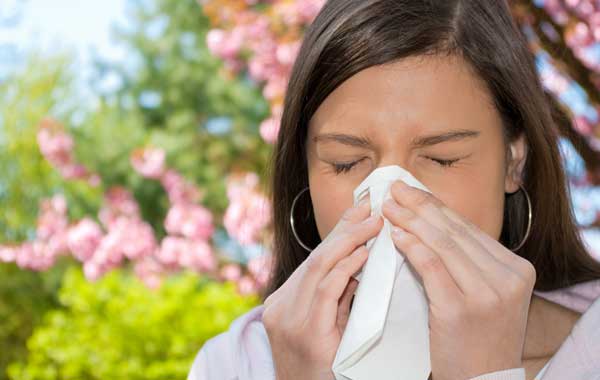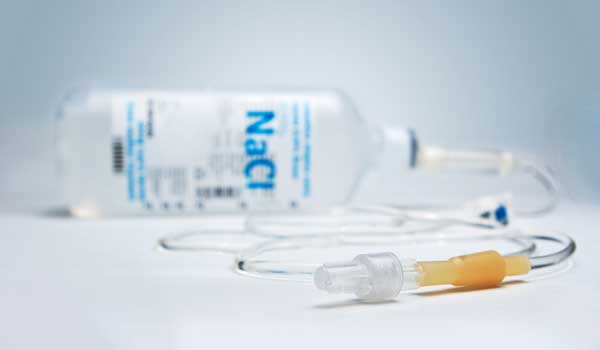9 Weirdest Allergies
Intro

Allergies are brought on when the immune system acts as though foreign substances are more harmful than they really are.
According to the Centers for Disease Control and Prevention, eight types of food account for more than 90 percent of allergic reactions in affected individuals. The eight: milk, eggs, peanuts, tree nuts, fish, shellfish, soy and wheat.
However, some people react to some very unusual allergens. Here are nine of the weirdest allergies.
Semen

While it's possible for women to be allergic to their partners' semen, it's also possible, if even less common, for men to be allergic to their own semen.
Dutch researchers reported two cases of postorgasmic illness syndrome in the January issue of the Journal of Sexual Medicine. In both cases, the men experienced allergic symptoms around their eyes and nose, and transient flu-like illness within seconds, minutes or hours after sex, masturbation or spontaneous ejaculation. Skin-prick tests confirmed they were indeed allergic to their own semen.
Their allergies were eventually treated by hyposensitization therapy, in which a person is injected with small amounts of their allergen in the case, their own semen over time, in gradually increasing doses. The researchers reported that the men showed significant improvement in their symptoms after three years of treatment.
Beef

Allergies to beef are unusual, especially in adults. But according to a case study reported in the Journal of Investigational Allergology and Clinical Immunology in 2001, a man with no apparent history of allergies suffered two such reactions to beef. One came immediately after eating sirloin steak, and the other, some days later, occurred after eating a hamburger made with cow's meat. A skin-prick test showed he was allergic to beef, pork, lamb and rabbit meat, but not allergic to cats, horses, mites, soybeans or cow's milk, the study said.
Get the world’s most fascinating discoveries delivered straight to your inbox.
Because the patient could tolerate milk and poultry products, the doctors recommended he eat a meat-free diet, with the exception of poultry. However, he had trouble sticking to his new diet. Four months later he had two new breakouts, after eating lamb and pork sausage, respectively.
Female hormones

It's relatively common to hear women complain of worsening acne and water retention at certain points of their menstrual cycle. However, a small number of women suffer a condition called autoimmune progesterone dermatitis (APD) a skin disorder that's made worse by progesterone hypersensitivity during the luteal phase of the menstrual cycle, which occurs after ovulation.
APD usually occurs in adult life and rarely during pregnancy or the postmenopausal period.
A typical case was reported in the European Journal of Dermatology in 2002. A 27-year-old woman was admitted to a clinic for recurrent facial hives that always started about three days before her period and faded within seven days. Her skin lesions would disappear spontaneously without any residual markings until her next cycle.
The diagnosis was confirmed when a skin-prick test showed that progesterone caused redness and swelling within 30 minutes. Once the woman was diagnosed, her symptoms were resolved by hormone-based therapy.
Water

Yes, it is possible to be allergic to one of the most abundant substances in the world, including in our own bodies. People with this condition properly known as aquagenic urticaria often experience severe itching and hives within five minutes of contacting water, regardless of its source (sea or tap water) or temperature.
The lesions last about 30 minutes. The diagnosis is confirmed by applying to the skin a water-drenched compress at body temperature.
About 30 cases of aquagenic urticaria have been published in the medical literature, and the mechanism of this rare condition is still not known. According to a 1998 case study in the Annals of Allergy, Asthma and Immunology, histamine levels the usual allergy culprit do not actually change during this allergic reaction. That makes the reaction difficult to treat or prevent with antihistamine medication.
Cold temperatures

Also known as cold urticaria or cold hives, this is an inflammatory disorder caused by a sudden drop in temperature. Similar to other, more common allergic reactions, the patients often experience redness, itching, swelling and hives when they come in contact with cold air, cold water or even cold beverages, according to the Mayo Clinic.
Those with the condition may have learned to avoid cold temperatures, and may take antihistamines before cold exposures as a precaution. Swimming in cold water is the most common cause of a severe, whole-body reaction. The cold temperature triggers the massive release of histamine and other immune system chemicals, causing a sudden drop in blood pressure that can lead to fainting, shock and, in rare cases, death.
Saline solution

Consisting mainly of salt (sodium chloride) and water, saline solution is considered to be a benign substance, and it is often delivered intravenously to those at risk of dehydration.
However, in a case reported in the American Journal of Emergency Medicine in 2009, a 37-year-old Turkish woman developed an anaphylactic reaction to normal saline infusion while she was being evaluated for acute abdominal pain.
Fish bait

There are a few reported cases of fish bait-induced allergic reactions among fisherman.
In one such case, a 58-year-old amateur fisherman complained of swelling and hives on his face and body whenever he went fishing in fresh water. The symptoms would appear about three hours after he began fishing, but sometimes would not show up for six or eight hours, after he'd returned home. Skin-prick tests revealed that the man was allergic to the larvae of Galleria mellonella (the greater wax moth), which he had used as bait.
Beanbags

Soybeans are a common food allergen, and those who are allergic know not to include any soybeans in their diet.
However, soybean allergies can be triggered from unexpected places, including beanbags. According to a 1996 case study reported in the Annals of Allergy, Asthma & Immunology, a 6-year-old boy experienced mild respiratory distress while playing with a beanbag at school. His reaction was triggered by dust from the dry soybeans in the beanbag.
Pancake mix

For most people, expired pancake mix poses perhaps only a minor threat to their health and their taste buds. However, a 19-year-old man suffered anaphylactic shock and died after he ate pancake mix that had been left open in a cupboard for about two years.
According to the 2001 case study published in the American Journal of Forensic Medicine & Pathology, the man had a history of multiple allergies, including to mold and penicillin. In response to complaints from two friends, who said the pancakes tasted like "rubbing alcohol," he ate two pancakes for breakfast and experienced shortness of breath soon afterward. He became cyanotic (he turned blue due to the lack of oxygen) on the way to the clinic and collapsed in cardiopulmonary arrest upon arrival.
A lab test confirmed that the pancake mix contained a total mold count of 700 per gram of mix, and the pancakes he ate contained an approximate mold count of 21,000. (For comparison, the American Academy of Allergy, Asthma & Immunology considers a mold count of between 13,000 and 49,999 per cubic meter of outdoor air to be high.)
His fatal allergic reaction was probably triggered by the mold in the stale pancake mix, the researchers said.
Follow MyHealthNewsDaily on Twitter @MyHealth_MHND.


